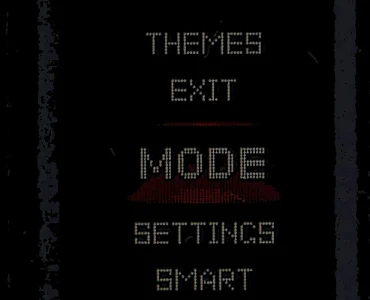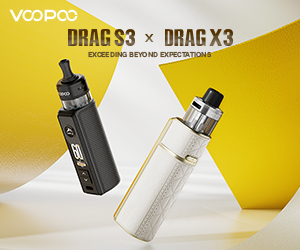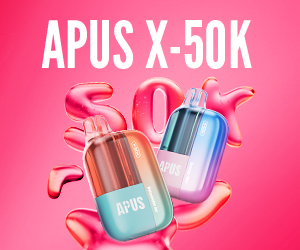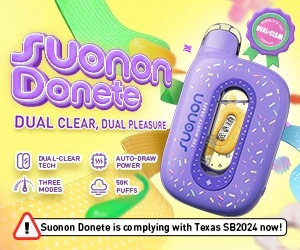Few things are more disconcerting to new vapers than an unexpected popping or crackling noise emanating from their vape with every puff. While some light crackling is to be expected, especially if firing up a fresh coil, persistent noises, gurgling, or e-liquid spitting into your mouth are signs of a problem somewhere.
The good news is that this problem is usually relatively straightforward to fix. Whether the cause is a flooded coil, improper wattage, or even your vaping technique, this article will walk you through the most likely reasons behind the noise and what you can do to prevent it from happening.
- Popping, crackling, or spitting from a vape is almost always caused by too much e-liquid in the coil and heating chamber of the device. This excess of vape juice can be caused by several different things, all of which are generally easy to diagnose and fix.
- Coils that are reaching the end of their usable lifespan are particularly susceptible to flooding and oversaturation. As the materials inside the coil break down, it is less able to regulate the e-liquid that is absorbed by the wicking, and the vaporization process is compromised.
- If an old coil isn’t the problem, the oversaturation that leads to popping and spitting is likely caused by either incorrect wattage settings or by using e-liquid that is not suitable for the device or power setting. Both of these causes are easily tested and fixed.
- The way you draw on your vape can also lead to excess e-liquid pooling in the coil and heating chamber. Drawing too heavily, too quickly, can result in more vape juice being drawn into the coil than it can efficiently handle. This is particularly true with low-power pod vapes.
What Causes a Vape to Pop and Crackle?
The popping sound is created by bubbles of vapor forming in the e-liquid and then bursting. This tells you that, for some reason, the e-liquid is not being vaporized efficiently. This could be because the coil just needs to warm up a bit, but it could also point to a deeper issue if the noise is particularly sharp and persistent.
Let’s run through a few of the main reasons why every puff sounds like oil in a hot frying pan.
An Oversaturated or Flooded Coil
If your vape is making popping, crackling, or bubbling sounds when you draw on it, the most likely cause is an oversaturated coil. While some light popping or crackling is normal, particularly after a fresh refill, if it continues after the first few puffs, the coil might be flooded.
Flooding or oversaturation of a coil occurs when excess e-liquid accumulates around the heating element, often because the wicking cotton can no longer absorb and hold the vape juice effectively. It is a common sign that the coil is past its best and the wick is beginning to break down.
That said, coil flooding or oversaturation is always a sign of a dying coil. New coils can display this problem, often due to refilling not being done carefully enough. Squirting e-liquid directly into the center of the coil instead of around the sides can cause juice to pool where it shouldn’t, and where it cannot be efficiently wicked and vaporized.
If your vape is popping and you believe the cause is an oversaturated coil, there are a couple of things you can try to fix it. Holding your vape firmly in your hand and giving it a sharp downward flick can help to expel any excess e-liquid pooling in the coil out through the chimney and mouthpiece.
Often, this will resolve the issue. If not, try briefly firing the device without drawing on it to evaporate the excess vape juice. Just take care not to overdo it, as you could damage or burn the coil. If these steps don’t help, the most reliable fix is to replace the coil entirely.
Power Setting is Too Low
It’s easy to assume that popping and crackling are more likely to be caused by overly high wattage (after all, it can bring to mind what happens when dripping water into a hot, dry pan), but in fact, it is low power that’s more often the problem. Using a vape at low wattage reduces the amount of vapor that is produced, and that is a clue to the problem.
If everything is working as it should, each puff you take on the vape draws e-liquid into the coil while simultaneously vaporizing the e-liquid that is already there. Each new puff causes this cycle to repeat.
However, if the wattage is too low, the juice in the coil doesn’t fully vaporize, and any residual liquid sits there. With each fresh puff, you’re drawing more juice into the coil, and leaving more unvaporized. Eventually, this can overflow into the heating chamber of the coil, where it can result in popping, bubbling, and gurgling.
The immediate, short-term fix for this problem is the same as it is whenever the coil is flooded. Give the vape a sharp, firm flick downwards to eject the excess out through the drip tip/mouthpiece. Once this is done, briefly firing the vape without drawing can help vaporize any residual e-liquid.
To prevent this problem from recurring, you will need to increase the wattage, being careful to stay within the safe range. Either check the manufacturer’s recommended wattage setting for the coil you are using, or simply test the device at incrementally higher power until the popping problem stops.
Using the Wrong PG/VG Ratio E-liquid
Something that can contribute to coil flooding, in a less obvious way, is the type of e-liquid you choose to put in your tank or pod. The main ingredients in vape liquids, PG (Propylene Glycol) and VG (Vegetable Glycerin), have different viscosity levels. PG is thin, flowing, and vaporizing easily; VG is thicker and slower to flow into the coil and to vaporize. It is VG’s higher viscosity that can lead to flooding, and then to popping.
If you’re vaping a high-VG juice (typically 70% VG or more) at the lower end of your coil’s wattage range, you are much more likely to notice louder pops or a slightly wet vape experience. This occurs because the vape juice isn’t being fully vaporized with each puff. Instead, some excess juice remains in the coil, then rapidly vaporizes in small bursts as the temperature rises, causing that signature pop.
As a rule, high-VG e-liquids are best used with sub-ohm coils, as these are generally used at a higher wattage. Anything below about 0.6 should be able to cope with all but the thickest VG liquids (more than 90% VG). If you are using a coil with a resistance of 0.8 or more, stick with e-liquid that has at least a 50/50 mix of PG and VG. Just remember to match the wattage you vape at with the resistance level of the coil (assuming it isn’t automatically set by the device based on the coil being used).
Drawing Too Hard, for Too Long
The way you inhale can affect how your vape behaves. Pulling too forcefully on the mouthpiece, especially on a mouth-to-lung (MTL) device, can draw more liquid into the coil than it can handle in real time. This has the potential to lead to, you guessed it, oversaturation, which in turn can lead to popping, bubbling, and even unpleasant spitback.
Small pod devices, which tend to have tighter airflow and smaller coils, can be particularly prone to this problem as they are not always designed to allow users to take large, fast draws. Thankfully, modern vapes, even small ones, are increasingly being designed to avoid this very issue.
If you notice that popping mostly seems to occur after you have been hitting your vape unusually hard and fast, this could be the problem. Try taking a few slower, gentler puffs to allow the coil to work through any existing excess e-liquid. Going forward, either increase the wattage slightly if your device allows, or avoid being so heavy-handed (or heavy-mouthed) with your puffs.
What Type of Vape Suffers Most From Popping?
While it is possible to encounter popping with a small, low-powered pod vape, it is far more likely to occur with devices that have large tanks, larger coils, and higher wattage, particularly with sub-ohm vapes. This type of more complex vape generally allows the user more control over the power level that is used, and unless you are careful with these settings, running the device at the wrong wattage for the coil is easy to do.
Pod vapes are rarely filled in a way that exposes the middle of the coil, so accidentally pouring liquid into the middle is far less likely to happen. The small, narrow coils found in most pod vapes are also far less likely to flood and get oversaturated during normal use. And while many small pod vapes allow changes in wattage, highs and lows are more tightly controlled (and often automatically set based on the coil resistance), meaning there is less risk of using incorrect power settings.
Why It’s Important to Prevent Popping
Inconsistent Flavor: Popping and spitting can prevent proper vaporization, leading to muted or burnt-tasting flavors from your e-liquid.
Less Vapor per Puff: When e-liquid isn’t fully vaporized, vapor output drops. This can result in a less-than-satisfying vape experience.
Increased Risk of Spitback: Spitback can send hot droplets of e-liquid into your mouth, which is unpleasant and undesirable, particularly if using high-nicotine vape juice.
Decreased Coil Lifespan: Excess e-liquid building up consistently can strain the coil components, including the wick. This can result in a significant reduction in coil lifespan.










Add comment